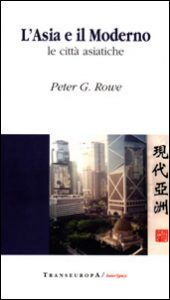L'Asia e il Moderno (Asia Modern)
 The central theme of Asia Modern concerns the need to expand standard western cultural definitions of modernity in order to account adequately for the modernization and urbanization which is occurring so rapidly in many parts of Asia. Narrowing its geographical focus, examples drawn on in the book concentrate primarily on Chinese or Chinese-dominated cities and urban areas such as Singapore, Hong Kong, Taipei, Shanghai, Beijing, Dalian and Suzhou, with some occasional references to Seoul, Tokyo and Kuala Lumpur. Drawing on extensive research and field observation, the scope of the book is confined largely to urban settlement and other aspects of the built environment. Topics included are various styles of urban management, the overall morphology of urban-regional development and urban planning, as well as matters of urban-architectural expression and the search for local yet contemporary architectural identities.
The central theme of Asia Modern concerns the need to expand standard western cultural definitions of modernity in order to account adequately for the modernization and urbanization which is occurring so rapidly in many parts of Asia. Narrowing its geographical focus, examples drawn on in the book concentrate primarily on Chinese or Chinese-dominated cities and urban areas such as Singapore, Hong Kong, Taipei, Shanghai, Beijing, Dalian and Suzhou, with some occasional references to Seoul, Tokyo and Kuala Lumpur. Drawing on extensive research and field observation, the scope of the book is confined largely to urban settlement and other aspects of the built environment. Topics included are various styles of urban management, the overall morphology of urban-regional development and urban planning, as well as matters of urban-architectural expression and the search for local yet contemporary architectural identities.
Contents
- Modernization and the Asian Region
Emerging Trends in Asia
Commonly Understood Relationships
Revision of Long-standing Definitions
- Westernization, Indigenization and Different Paths Forward
Collective Consumption and Market Forces
Dirigisme, Secularism and Modernization
Responses to the West
- Industrialization, Urbanization and New Patterns of Settlement
Industrialization of the Countryside
Modernization and Decentralization
Regional Scale of Development
- Universalism, Localism and a Third Way
Modernization and Identity Assertion
Modernism as a ‘Lingua Franca’
Emergence of a Third Way
- Differences in Kind and of Degree
Regional Influences and Reflections
A Matter of Timing
Expanded Definitions
Transeuropa, 1998